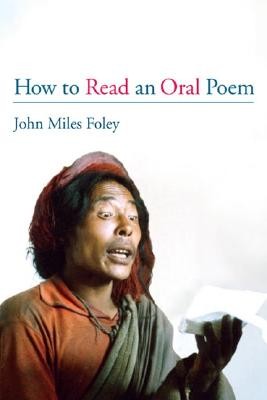| How to Read an Oral Poem Contributor(s): Foley, John Miles (Author) |
|
 |
ISBN: 0252070828 ISBN-13: 9780252070822 Publisher: University of Illinois Press OUR PRICE: $27.72 Product Type: Hardcover - Other Formats Published: October 2002 Annotation: Though they appear diverse, Homer's Odyssey and slam poetry from contemporary urban America draw from the well of oral tradition. This unique, practical, and user-friendly guide explores the cultural contexts of verbal art to provide more-than-textual methods for understanding the structure, principles, and social applications of oral poetry. Drawing on dozens of examples, including a North American slam poet, a Tibetan paper-singer, a South African praise-poet, and an ancient Greek bard, John Miles Foley shows that although oral poetry long predates the invention of writing, it continues to be a vital culture-making and communications tool in societies all over the world. Based on fieldwork and archival research on epics, folktales, lyrics, laments, charms, and other oral traditions, How to Read an Oral Poem answers the questions, What is oral poetry? How does it work? What is reading, literally and figuratively? |
| Additional Information |
| BISAC Categories: - Social Science | Folklore & Mythology - Literary Criticism | Poetry |
| Dewey: 398.209 |
| LCCN: 2002002329 |
| Physical Information: 0.82" H x 6.1" W x 9" (0.97 lbs) 280 pages |
| Descriptions, Reviews, Etc. |
| Publisher Description: Though they appear diverse, Homer's Odyssey and slam poetry from contemporary urban America both draw from the well of oral tradition. This unique, practical, and user-friendly guide explores the cultural contexts of verbal art to provide more-than-textual methods for understanding the structure, principles, and social applications of oral poetry. Using dozens of examples, including a North American slam poet, a Tibetan paper-singer, a South African praise-poet, and an ancient Greek bard, John Miles Foley shows that although oral poetry long predates the invention of writing, it continues to be a vital culture-making and communications tool in societies all over the world. Based on fieldwork and archival research on epics, folktales, lyrics, laments, charms, and other oral traditions, How to Read an Oral Poem answers the questions, What is oral poetry? How does it work? What is reading, literally and figuratively? This accessible and engaging work is enhanced by audio and video examples of oral poetry, which are available at http: //www.oraltradition.org. The book can also be used as companion volume to Foley's Teaching Oral Traditions. |